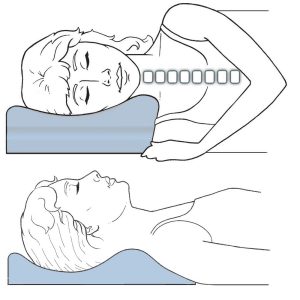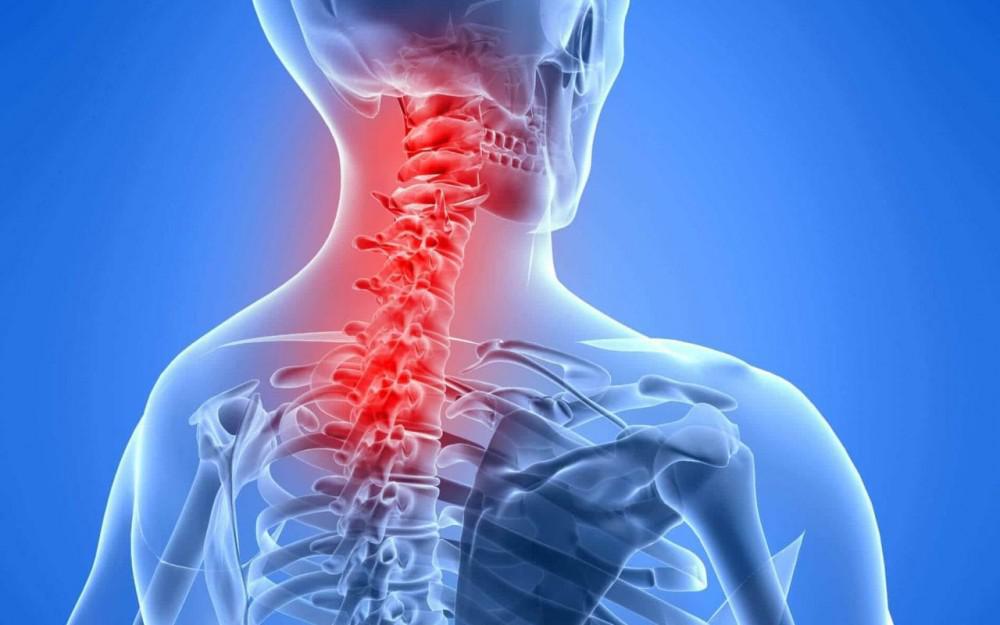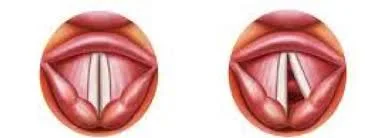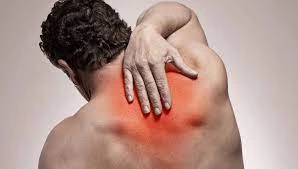Neck pain: Cause, Symptoms, Diagnosis, Treatment, Exercise
What is Neck pain?
Neck pain is pain in or around the vertebral column below your head, known as the cervical spine. It is a common symptom of many different medical conditions and injuries around the neck region. You might have localized neck pain (felt mostly in the neck) or cervical radiculopathy (pain radiating from the neck to other areas such as the shoulders or arms).
It can be acute (lasting from days to up to one and a half months) or chronic (lasting longer than 3 months to years). It can interfere with daily activities and reduce your quality of life if it’s untreated.
Who is more affected by the neck pain?
-It is more common in women than in men. It occurs in about 1/3 of people at least once a year.
What does neck pain feel like?
Some people describe the pain as:
- General soreness around the neck region. It is described as achy, not sharp.
- Stiff neck:-Difficult to move neck side by side.
- Sharp pain:- Patient feels stabbing-like pain. This pain localized to one spot. This type of pain typically occurs in the lower neck.
- Radicular pain:- This pain can radiate along a nerve from the neck into the shoulder and arm. This nerve pain might feel like it is burning or searing.
- Cervical radiculopathy:- Neurological deficits (problems with reflexes, sensation, or strength). It may be experienced in the arm due to nerve root compression. Cervical radiculopathy may also be accompanied by radicular pain.
What Is Cervical Radiculopathy?
The trouble with gripping or lifting objects. This problem can happen if numbness or weakness goes into the arm and fingers.
Sometimes the patient feels headaches. Because of discomfort irritation in the neck can affect muscles and nerves connected to the head.
Neck pain typically develops in one following ways:
- Slowly over time.
- Immediately after an injury.
- late reaction after an injury.
- Sometimes it can start in the middle of a normal day without any reason.
- Cervical pain symptoms might be constant, go away immediately, come and go regularly, or return intermittently.
See When Is a Stiff Neck Serious?
- Radiating pain in both arms or legs (myelopathic pain)
- Numbness or weakness in arms or legs
- Problems with balance or coordination
- Loss of bowel or bladder control
- Unintended weight loss
- Fever or chills
- Severe headache with a stiff neck
What are the possible causes of neck pain?
Many different medical conditions and trauma to the neck region can cause pain in the neck region.
Conditions that may cause cervical pain include:
Age:
Degenerative conditions such as osteoarthritis of the cervical spine(the wearing down of joint cartilage) and spinal stenosis (narrowing of the spaces in the spine) can lead to cervical pain. Over time, stress and motion can lead to spinal disc degeneration, causing a bulging disc or irritating nerve roots.
Injury:
Trauma from the sudden forced movement of the neck or head and rebound in the opposite direction (whiplash) can cause pain and soreness in the muscles of the neck region. The spinal cord, nerve roots, muscles, ligaments, discs, and vertebral joints in the spine of the neck can be affected by trauma injuries.
Mental stress:
Stress can cause the muscles to feel tight or achy and later on affect your joints.
Muscle strain:
Overusing your neck muscles during repetitive actions or strenuous activities can lead to stiffness and pain around the neck region.
Nerve compression:
Disc bulging or osteophytes in the vertebrae of your neck can press on the nerves branching out from the intervertebral foramen.
Conditions that affect spinal balance:
Poor posture (sitting for long periods of time; poor computer/desk/chair positioning), obesity, and weak neck muscles can all affect spine posture and contribute to neck pain.
Growths:
In rare cases, masses including tumors, cysts, and bone spurs around the cervical spine can cause pain in the neck region.
Other health conditions:
Meningitis, rheumatoid arthritis, cancer.
Eliminating the Red flags
Doctors should ensure that they carry out thorough subjective screening for patients who present with pain in the neck. Subjective assessments should be used to eliminate possible serious pathology such as;
- Fractures
- Instability of the vertebrae
- Coronary Artery Dysfunction (CAD)
- Myelopathy
- Cancer
- Infection
- Visceral disorders
Clinicians should also rule out potential myelopathy.
- Dizziness
- Diplopia (double vision)
- Drop attacks
- Dysphagia (swallowing difficulties)
- Dysarthria (problems with speech)
- Nystagmus (involuntary eye movements)
- Nausea
How to diagnosed?
- Doctors diagnose neck pain with a history of the patient and physical examination.
- The doctor will move your neck to locate pain and find motion problems and palpate the neck region to check tenderness.
- Doctors also check your muscle power and reflexes.
- To diagnose the cause of the pain, imaging tests are done.
Such as,
- X-ray
- Magnetic resonance imaging (MRI)
- Computed tomography (CT)
These tests can show any damage to the bones and surrounding tissues in your neck.
- Other tests may include:
- Electromyography
- Nerve conduction studies
- Myelogram and/or nerve root block
- These tests focus on the spinal cord, disc, and the spine itself, and also check the function of nerves and muscle response and the source of the pain.
How is the neck pain managed or treated?
Treatment for neck pain depends on the cause. It aims to relieve pain and improve the function of daily lifestyle.
Standard treatments for these symptoms include:
- Medicines include nonsteroidal anti-inflammatory drugs (NSAIDs) to decrease pain and inflammation and muscle relaxants too.
- Physical therapy ( to strengthen the muscle and improve functions of daily living).
- Steroid injections near the nerve roots in the neck region to help relieve pain and inflammation.
- Surgery to repair compressed or damaged spinal discs or fuse some vertebrae in the spine.
Physiotherapy Treatment for neck pain
Pain management:
- Transcutaneous electrical nerve stimulation [TENS]
- Interferential therapy [IFT]:- It depends on your radicular symptoms.
- Ultrasound therapy:- It is effective in neck pain patients who have trigger points over the trapezius muscle or are associated with myofascial pain syndrome. That ultrasound therapy inactivates the trigger points and decreases the tension of soft tissues.
Muscle energy techniques:
Active stretching techniques can be effective in neck pain.
Turn your neck
- Slowly turn your neck towards one side and hold this position for 5-7 seconds.
- Ensure that your jaw is at the same height throughout the stretching.
- Gently turn your neck to the other side and hold this position for 5-7 seconds.
- Repeat the exercise 3 times.

Neck tilt
- It is one of the simplest exercises to relieve neck pain. Tilt your neck towards the floor and touch your chin to the chest.
- Hold this position for at least 5-10 seconds. Return to the normal position.
- Repeat the exercise 5-10 times according to your comfort.

Side tilt
- Tilt your neck towards your shoulders and hold the position for 3-5 seconds.
- Return your head to normal.
- Tilt your neck to the other side and hold this position for 3-5 seconds.
- Repeat the exercise at least 5-10 times on each side.
Shoulder extension

- Straight your body and make sure your posture is perfect. Push your neck forward and draw your shoulders together in alignment. Hold the position for 5-7 seconds and feel the stretch on your neck muscles. Gently return to your normal position.
- Repeat the exercise 5-10 times according to your comfort.
- The bottom line
- Do remember that if your neck pain does not go away even after a month, it is important to consult a physiotherapist to get to the root of the problem. On average, your neck pain should get better within 15-30 days. It is also important to change your lifestyle for preventing neck pain, including proper postures and keeping your phone on an eye-level to prevent further neck pain.
To relieve neck pain at home
- Your doctor or physical therapist can recommend you can take it home to relieve neck pain. These may include:
- Use hot or ice packs twice a day for 10 min.
- Doing gentle stretches or exercises which mention above.
- Take medicines to relieve pain and inflammation such as ibuprofen. Resting.
- Temporarily stopping vigorous physical activity.
Long-term strategies to reduce neck pain include:
- Quit smoking. Smoking slows healing.
- Lose weight if you are overweight.
- Reduce your stress level.
- Walk, meditate, get a massage, try a yoga class, and exercise.
- Do exercises that strengthen your neck and shoulder muscles and also do self-stretch neck muscles.
Advice for women:
-Try to avoid one-sided heavy purses/bags wherever possible. Because it unbalances the shoulders and leads to neck pain with regular and prolonged use.
How to select the proper pillow for Neck pain?

- The best pillow for neck and shoulder pain is firm enough to hold the head at a correct angle but soft enough to alleviate pressure points. Most people find success with either memory foam, latex, buckwheat, or feather pillow, as these materials provide the best balance of support and pressure relief.
1. Cervical pillows for neck pain relief.
Cervical pillows especially provide neck support and keep your spine in proper posture while you’re asleep. It’s elevated where your neck is more compressed where your head lies. Your pillow should work ergonomically to support your neck. Cervical pillows come in different shapes and materials according to your comfort.
If you’re changeover from a regular pillow to a cervical pillow, you may feel discomfort for some days. Using it every day for taking a short rest during work can adapt easier.
2. Pillows that mold to the neck for back sleepers
Choosing the right pillow for your neck depends on how you sleep. If you sleep on your back, try to choose a pillow that molds to your head and neck so that your neck is enough to support. Memory foam pillows or water pillows are good choices for back sleepers. They keep their shape but adjust according to your body.

3. Firm pillows for side sleepers
If you sleep on your side, then choose a firm pillow. Place the bulk of the pillow under your neck rather than your head, which provides proper support to the spine.
It helps if the pillow has elasticated. A pillow with a elasticate is one with extra material in it, with the join into rectangular panels on all four sides of the pillow so that the cushioning adjusts when you move your head. A pillow without a elasticate has only two pieces, a top and a bottom that are stitched together. Side sleepers also need to put a pillow between their legs to help maintain spine posture.
4. Thin pillows for stomach sleepers
When you’re sleeping on your stomach you put stress on your back. So, you have to use a thin pillow or no pillow to avoid stress on your back. Also, use a thin pillow under the abdominal area that can help to decrease the stress on your back.
5. Horseshoe pillows when traveling
When you’re traveling by car, plane, or train, a horseshoe pillow is great support for your neck. If you have neck pain, don’t let your head bend to the side when you sleep during traveling. Make sure your neck is supported.
When to Call the Doctor?
Contact your doctor if you have neck pain that intrudes into work or other routine activities.
In some cases, neck pain can be a sign of a medical emergency. Look for urgent medical care if your neck pain:
- Develops after an accident. If you feel numbness or tingling in the arms, shoulders, or legs.
- Weakness in arms and legs or loss of coordination in arms or legs.
- Neck pain includes headache, dizziness, nausea, or vomiting.
- Arises along with a stiff neck. Occurs with cold, fever, or unexplained weight loss.
- Does not respond to over-the-counter medications. Does not lessen after one week.







37 Comments